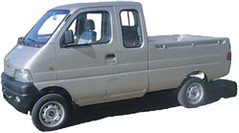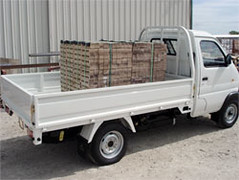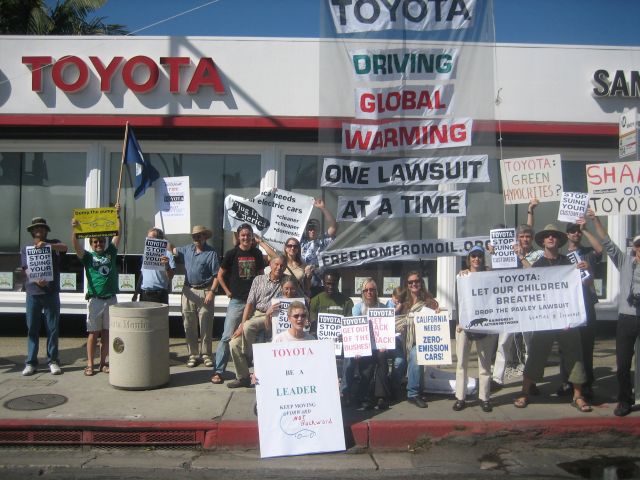
 Author Archive for Jason Lancaster
Author Archive for Jason Lancaster
Jason Lancaster is the editor and founder of TundraHeadquarters.com. He has nearly a decade of experience on the retail side of the auto industry, and another decade of experience of the part and accessory side of the industry.
Will Ford Replace The Ranger With “F150 Light?”
Domestic automakers Ford, GM, and Chrysler are in trouble. After building their financial futures around the sale of full-size pickup trucks and SUV’s for decades, an increase in fuel prices combined with the sluggish American economy have conspired to slow the sales of these vehicles to a trickle. Chrysler sales are off amid rumors of bankruptcy, GM and Ford stock has seen record lows, and Ford’s F150 appears as though it will lose the crown of “best selling vehicle in North America” to the Toyota Camry.
Ford has realized that it is looking more and more like they will be unable to count on the dollars flowing in from F150 sales. At the same time, Ford understands (perhaps better than anyone else) that there will always be a market for pickup trucks. The company has begun to explore the idea of splitting the F150 into two distinct products in order to meet the needs of a wider range of buyers. The idea is to keep the current full-size F150 while also offering a smaller truck to attract buyers who do not require the full towing or hauling capabilities of the F150.

Will America like the F150 light as much as this guy likes the Coors light girls behind him?
Saving Gas: Low Rolling Resistance Tires For Your Truck
With gas prices being what they are, many people are looking for low-cost modifications that they can make to their trucks in order to squeeze every possible mile out of a gallon of gas. There are a number of gadgets, additives and devices out there that try to separate drivers from their money with pie in the sky claims, but there are also some ideas and products which seem like genuine, well-researched solutions. Low-rolling resistance tires are an example of a well-researched fuel saving device.

Are low rolling resistance tires a good way to save gas, or a good way to reduce performance?
A little bit of background: the tires on your truck are designed to be a balance between several different performance characteristics. They need to be able to stick to the road in order to provide traction, but they can’t be too sticky, or the engine will have to work that much harder in order to overcome the friction they create. They also need to be made of a material that is soft enough to provide traction yet still wears well, and is capable of lasting for tens of thousands of miles. Finally, the size of the tire and the depth of the tread also contribute to how much energy it takes to get the tire moving, with taller wheels generally requiring more energy. The same is true of knobbier, deeper tread patterns, such as those found on off-road tires.
When taken together, the amount of energy it takes to get a tire moving and keep it going is called rolling resistance. If you reduce the amount of rolling resistance, then all other things being equal, you can reduce the amount of fuel required to move a vehicle. It seems like tires with less rolling resistance would be a great way to improve your truck’s fuel economy. Right?
Well, yes and no. Unfortunately, due to the most commonly used methods of reducing a tire’s rolling resistance, there is a rather significant safety trade off when it comes to grip and stopping power. Since the primary technique used in creating low-rolling resistance tires is to use less rubber and more filler in the tire itself, there is less traction available to your vehicle, and this means that stopping distances increase dramatically. Not only that, but wet weather traction is also reduced, putting you at risk in sharp corners and in heavy breaking situations under rainy conditions.
This isn’t the kind of trade-off most people are willing to make just to save a few bucks at the fuel pump. Fortunately, there are other ways to reduce the rolling resistance of your truck’s standard tires that don’t introduce any safety concerns. Since the size of a tire’s overall diameter contributes to the amount of rolling resistance that must be overcome, you should avoid running oversized, off-road tires on a daily driven vehicle. A smaller tire with a less aggressive tread pattern will help get your truck moving with a lot less effort – not to mention the money you will save on tread wear. A truck with better matched tires will also handle in a safer fashion on asphalt. If you are really concerned about your truck’s rolling resistance, then it’s better to save the swampers for off-road use only.
NOTE: Making sure that your tires are properly inflated (35 PSI is a good number for most uses) ensures that your tires aren’t causing any more resistance than necessary. Under-inflated tires generate more friction, reducing fuel economy and tire life.
Tiger Trucks: From China With Love
With the emergence of the Chinese auto industry, it’s no surprise that there are a few American companies beginning to import Chinese vehicles. While some companies are importing completed vehicles fully assembled and ready for sale, others are licensing Chinese vehicle designs and producing them in the USA. One of these companies producing Chinese designed vehicles in the USA is Tiger Trucks.


While they might not look heavy duty, the Tiger Truck Star (left) and Champ 4500 (right) are efficient and powerful. The Star (left) is comparable to most small pickups in terms of payload, while the Champ 4500 (right) can haul more than most 1/2 ton trucks currently on the road – including the Tundra.
Based in Oklahoma, Tiger Trucks is taking advantage of Chinese technology and innovation to create jobs in the United States.
Dropping Diesel Dumb Decision
Update: Read the complete story of the diesel Tundra
Toyota’s recent announcement that they’re “shelving” the diesel Tundra is a dumb decision. Here’s why:
- Ford, GM, and Chrylser will all offer diesel half ton trucks in the next 2 years (or less). Toyota will be the only major manufacturer without a light-duty diesel truck.
- Diesel engines offer the best potential for high fuel economy. Early estimates are that a diesel equipped Sierra or Silverado could get around 26mpg without a drop in performance* when compared to the current 5.3L gas engine.
- Light duty diesels are the best substitute for Ford, Dodge, and GM HD truck owners looking to step-down without sacrificing capabilities.
- Toyota already has an excellent light-duty diesel – the Aussie 4.5L twin turbo – ready to go. Economies of scale would likely make this engine cost-competitive with domestic offerings.
With the positives associated with integrating the 4.5L diesel into the Tundra being so plain, one has to wonder why Toyota would shelve such a promising powertrain? Lots of explanations are floating around, but here’s what we believe.

Have Toyota’s fears of a cultural conflict led them to cancel the diesel Tundra?
Search terms people used to find this page:
- tundraheadquarters
Ford MyKey System Discourages Responsibility
How many of us exceeded the speed limit, cranked up our stereo a little too loudly, or neglected to wear our seatbelt when we first began driving? How many of us had a teenage fender-bender? How many of us learned the hard way that one or all of these behaviors were foolish and are now wiser for it?
Ford has come up with a safety system that will allow parents to keep their children from acting stupidly while driving a 2010 Focus with the “MyKey” system. Parents will issue their young driver a specially programmed key that limits top speed and stereo volume, as well as a feature that locks out the stereo so long as seatbelts are un-fastened. The MyKey system also features an earlier-than-normal low fuel reminder and some very innovative radar-based “potential collision” warning sensors. In short, the MyKey system will help parents keep their kids from acting like, well, kids.

Will Ford’s new MyKey system make teens safer at the expense of responsibility?

